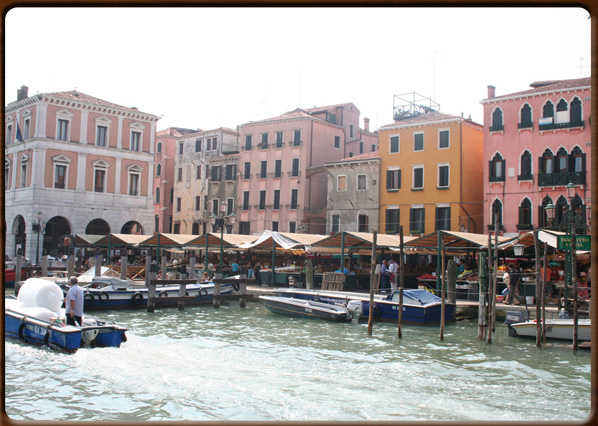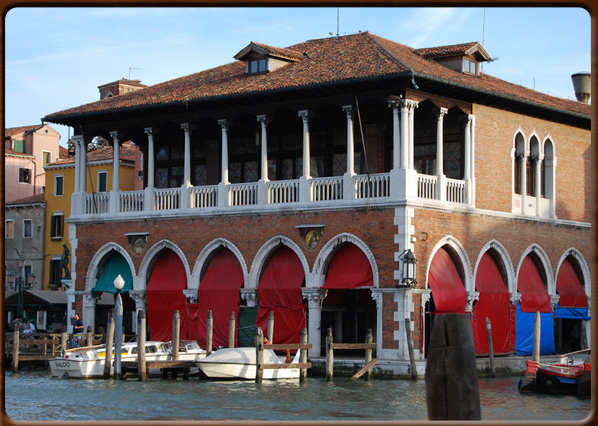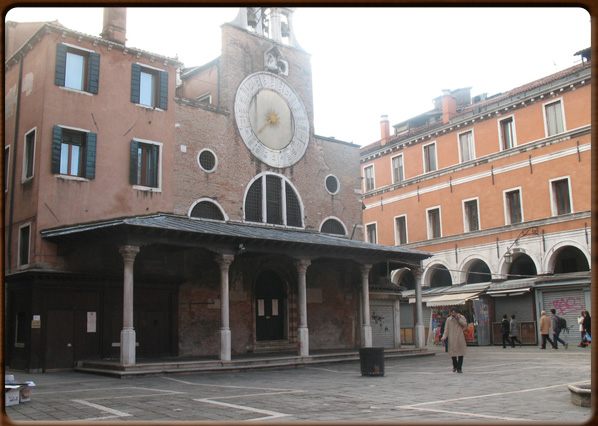
The 'Erbaria', market for fruit and vegetables .

The 'Pescaria' the fish market on the Grand Canal.

First rudimentary banking structure 1619.

San Giacomo of Rialto.




No video
The Government moved from Metamauco to the Rivoaltum islands in 810, consequently these became the centre of power, the capital of the city-state, and an important centre of commerce.
Everything and anything could be found in Rialto: valuable goods like spices, silk and precious metals and food from the islands and mainland were imported and exported, plus retail sales of fruit, vegetables, wine and fish.
Merchants from around the world frequented the place: Venetians, Lombards, Florentines, Germans, Arabs and Persians. Goods were sold and bought wholesale or retail, currency exchanged and deals brokered. The Government imposed a duty on every transaction.
Major trade took place at the bottom of the bridge, in the square in front of the church of San Giacomo di Rialto, while there was a local market along the banks. There was even a deposit bank called the “Banco Giro” in the square: this was both a kind of bank and a club for wealthy merchants.
There is still an old stone inscription on the façade of San Giacomo di Rialto that reads: “around this temple may the merchant’s law be fair, the weights right and the contracts upheld.”
The proclamation post (“Colonna del Bando”) sits in front of the church, supported by the Gobbo di Rialto, where the Venetian council’s public notices and proclamations were read and criminals sentenced.
The market area saw many changes over the centuries, but is always a good example of rational subdivision by area and goods.
Today the market is split between the areas of pescaria e erbaria (or "Pescheria" and "Erberia"). It is a colourful fragrant place offering the lowest prices in the city and an authentic glimpse of "Venezianità".
400 - 1000 - - rev. 0.1.9